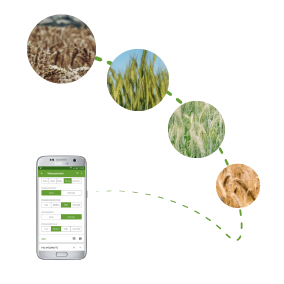
QuickTrials continues to be enhanced based on the feedback and requests we’ve received from our growing users. This newsletter covers some of the new features that we recently added. Our goal is to create your favourite tool for conducting agricultural field trials, where your data is always consistent and easy to analyse
Templates
We’ve added templates to make it easier to reuse trial definitions. Existing trial definitions can be turned into templates whenever needed and they will then appear on a separate page. This provides a clear separation between templates that are created by experts for a particular type of trial, and the actual trials that are going on in the field. The template feature saves time when defining trials that are similar and leads to more standardised and consistent work flows.
New Options For Plot Layout
A frequently requested feature for plot layouts was the ability to set an arbitrary number of columns for a more realistic layout. We recently implemented this for Randomized Complete Block layouts. When setting up a new layout, you can set the number of plots per row as a fixed number, according to what you think fits best on your field. The algorithm will try to lay out repetitions in blocks starting from the top which will save time.
To adjust for some unwanted conditions, we implemented an algorithm that can be used to automatically move plots with the same test subject to a different location to avoid possible touch points or edges between repetitions. The algorithm is applied after randomization. You therefore now have the choice between fully random (without this option) or random with some manual adjustments.
We also added more options to the “walking order” definition which defines the path an observer walks through the trial site. Different starting points are now available making it easier for observers to follow a natural route when capturing data.
Crop Variety Import
Importing crop varieties is now possible in the crop variety page. This makes it easier to have a master list of varieties in the system which have been imported from multiple sources. Having a cloud based central list of varieties helps with transparency and avoiding duplicates at analysis time.








